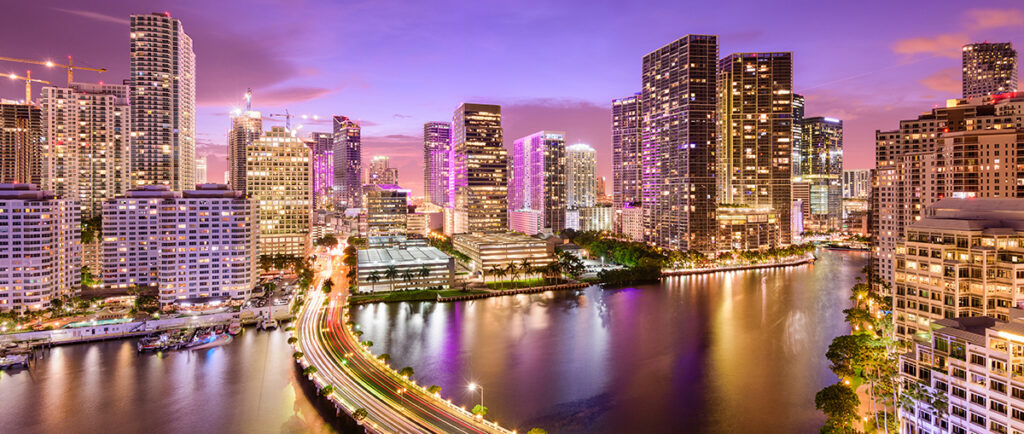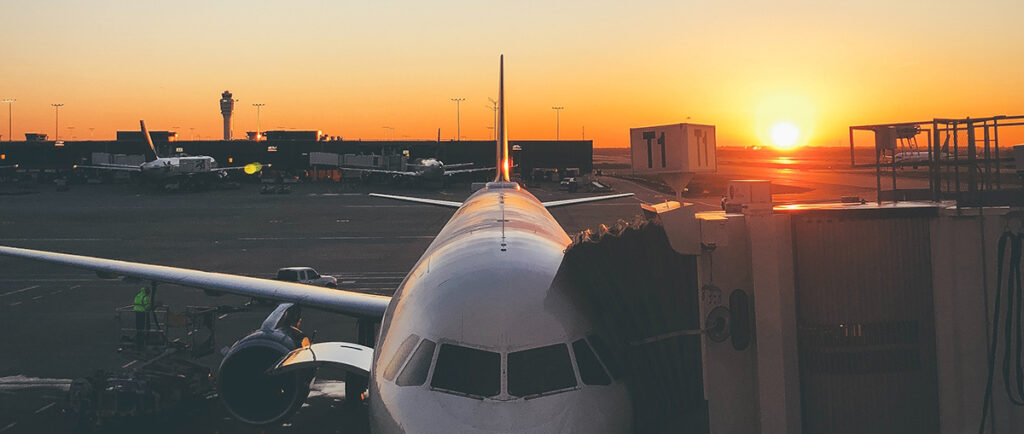
The last two months have been a roller coaster ride for all of us. It’s probably still too early to say what impact COVID-19 will have on commercial real estate in Miami, however, it seems like hospitality (hotels and short-term rentals) and retail assets will be the most vulnerable of the CRE asset classes. If social distancing continues until the end of the year, or if there is a second wave of infections, hospitality and retail assets could see significant downside repricing in the next 6-24 months.
According to the Greater Miami Convention & Visitors Bureau (GMCVB) in 2018 :
- Greater Miami and the Beaches had 16.5 million overnight visitors in, along with 6.8 million “day trippers” for a total visitor number of 23.3 million.
- Visitors had an economic impact of nearly $18 billion, fueled mostly by international visitors.
- The travel and hospitality sector employed a record 142,100 people (11.9% of all employees in Miami-Dade work in hospitality and leisure).
- Greater Miami’s hotel market ranked in the top 10 among the top 25 hotel markets in the U.S. according to STR.
- International visitors comprised 35% of the overnight market, with 5.8 million visitors, and contributed about 54% of the total visitor expenditure because of longer stays in the destination.
- Latin America remained a key feeder market, generating the top three countries of origin for overnight international visitors into Greater Miami: Brazil, Colombia and Argentina. Combined, these three countries delivered more than 20% of the international overnight visitors.
- Latin America as a region represented 45% of the total overnight visitors.
- Domestic overnight visitors (not including Florida Residents) represented 38% of the total overnight visitor market, with 6.2 million traveling to the Greater Miami area and representing 34% of visitor expenditures.
- New York City remained the largest domestic overnight market, contributing more than 1.2 million visitors or 20% of the total domestic overnight market.
- Cruise travel as a reason to visit Greater Miami continues to grow, with more than one in 10 visitors traveling to the destination for a cruise. Miami Dade County had 6 million cruise passengers..
- More than 22 million passengers arrived at MIA.
- Nearly two-thirds of overnight visitors to Greater Miami arrived by air.
- Greater Miami and the Beaches had an ADR (average daily rate) of $199.35 and a Hotel Occupancy rate of 76.7%. Occupancy and ADR resulted in RevPAR (revenue per available room) of $152.81.
- Tourists spent an average of $279.48 a day and stayed an average of 5.86 nights. With total spending averaging $1,637.75 per person per visit, the majority spent on shopping and lodging.
Then came the “The Rona” lockdown…
According to the Miami Herald:
- Among the top 25 tourism markets in the nation, Miami posted the largest decline in ADR for the week ending April 18 — a 56.8 percent drop to $101.51 from the same week last year, according to data from STR, an industry tracking firm.
- In Miami-Dade, occupancy from Apr. 12-18 was 20.3 percent, which is 75.4 percent lower than the same week last year. The RevPAR was at $20.59, an 89.3 percent slide from last April.
- Miami International Airport passenger traffic has dropped 90% since March,
- Around 75% of hotel hourly workers have lost their jobs.
Air Travel & Cruising
In early May, Warren Buffett, announced that Berkshire Hathaway was selling all of its substantial holdings in the four major U.S. airlines: American, Delta, United, and Southwest. Of all the industries disrupted by the coronavirus pandemic and the lockdown the airlines’ situation is in a sense the worst. Absent a vaccine (which is highly unlikely in the short term) will people feel safe going to an airport or sitting with 150 strangers on a plane? Probably not. Particularly if you are elderly or have a preexisting condition.
According to Bloomberg “the travel industry, which accounts for 10% of the global economy, can ripple to the remotest corners of the world. Each time a person takes a trip, it sets off a domino effect of consumption that directs dollars to airlines, hoteliers, restaurateurs, taxi drivers, artisans, tour guides, and shopkeepers, to name a few.”
In an article published in The Atlantic Last month about the future of air travel the author had this to say:
“Everything will be slower. If you check baggage, the handles may need to be wiped before staff members touch them. If you don’t think you’ll be checking baggage, think again: The airlines will likely crack down further on carry-on items, which potentially come into contact with other passengers. On the bright side, less carry-on baggage will reduce the rugby-scrum nature of the boarding process. It will also diminish impending delays at the TSA checkpoint, where agents may need to stop and wipe down bins after exposure to each passenger’s coat and bags.”
The author goes on to say…
“Everyone I spoke with said that the long-term effects of this public-health crisis are likely to match the “security theater” since the 9/11 attacks—for instance, the requirement that most passengers take off their shoes at TSA checkpoints, now more than 18 years after a man named Richard Reid attempted to blow up a plane by lighting the fuse to some explosives he had packed into the soles of his boots, and the ban on taking more than a few ounces of liquid aboard a flight. For the aviation business, “public-health theater” might include hand-sanitizer dispensers placed throughout airports; or tape markings on the floor indicating ideal separation distances; or other steps that can’t hurt, but also can’t solve the fundamental problem of packing a lot of people into a confined space.”
This all seems a bit draconian, but it’s probably fair to say that traveling by air will become, at the very least, a much slower and unpleasant process than it already was. Last month the TSA began checking passengers’ temperatures at several airports.
Last month Carnival Corp. laid off or furloughed nearly 50% of its local workforce. In mid-April, Royal Caribbean Cruises Ltd., the world’s second largest cruise company, said it would shed 26% of its workforce. In late April, Norwegian Cruise Line Holdings Ltd., announced it was laying off 20% of its staff. All three companies are based in Miami. However, a recent report by Carnival shows that bookings for the first half of 2021 are still rolling in and are “slightly lower” than 2020.
About 35% of all visitors coming to Miami are international visitors. Two-thirds of our visitors arrive by plane and 1 in 10 visitors pass through Miami to get on or off a cruise ship. It’s safe to say that the travel and hospitality industry will be negatively impacted by a Covid-19. In South Florida the hospitality and the retail industries seem to be more intertwined than in most other markets. Latin Americans tend to use their visit to Miami as a shopping opportunity to consume goods that would otherwise be prohibitively expensive to purchase in their home countries due to high import tariffs.

Retail Assets
According to this WSJ article “roughly 100,000 stores are expected to close over the next five years—more than triple the number that shut during the previous recession—as e-commerce jumps to 25% of U.S. retail sales from 15% last year, UBS estimates.”
The WSJ goes on to say:
“In the last few weeks luxury retailer Neiman Marcus Group Inc., apparel seller J.Crew Group Inc. and Stage Stores Inc., an operator of rural department stores, have filed for bankruptcy protection. J.C. Penney Co. is teetering on the edge after missing two interest payments. Collectively, they operated roughly 2,500 stores last year and employed nearly 120,000 people.”
“Going back over the last 20 years, the worst year for closures was 2009 when 2% of stores closed,” said UBS apparel and footwear analyst Jay Sole. “Our forecast calls for 2% of stores to close every year into 2025.”
“If this isn’t the retail apocalypse I don’t know what would be,” said Sarah Wyeth, the lead analyst for retail and restaurants at S&P Global Ratings. Ms. Wyeth estimates that there is a 50% chance that 19 retailers tracked by S&P will default on their debt. Five retailers defaulted during the 2008 recession.
What will the future of retail look like? It’s not all doom and gloom.
Malls will likely struggle because being inside in an enclosed building, with recirculated air, will not be the most enticing shopping experience in the near-term. Main Street may become the new retail opportunity again according to Robert Gibbs, author of Principles of Urban Retail Planning and Development:
- Malls depend on department stores to attract almost 50 percent of their shoppers and cannot operate without them, which is problematic for many reasons.
- Many mall retailers have lease options allowing them to break their leases and leave the mall should key department stores close.
- Department stores are losing market share, from a peak of 50 percent of all retail sales in the 1950s to 5 percent today.
- Since the heyday of malls in 1992, department store sales have dropped from $230 billion to $140 billion and many department stores are close to bankruptcy.
- Over 50 percent of regional malls are forecast to close by 2025 (Credit Suisse).
Robert Gibbs believes that national brands will move from malls to Main Street. According to Gibbs “As malls close and online shopping grows, existing mall retailers will seek new locations near their former mall stores. In many instances, these venues include smaller downtown cores, which traditionally offer lower rents and, now, the safety of an open-air shopping experience.”
Restaurants
We will likely see dozens upon dozens of independently owned restaurants go out of business in the coming months. As illiquid “mom & pop” restaurants close, well capitalized restaurants chains will likely replace them in the short-term. The restaurants that do survive will struggle. Social-distancing guidelines will restrict restaurants to 25% to 50% capacity, forcing them to modify operations and cut expenses to stay in business. In many cases expenses will likely go up for restaurant owners. Not only will servers be required to wear masks and gloves, but salt and pepper shakers, condiments and silverware will probably need to be replaced with single-use products for the foreseeable future. Will restaurants be able to pass on these costs to their clients? We will have to wait and see.
Landlords will find themselves in a tight predicament as well. Restaurant capacity will be significantly reduced unless cities start to close streets and allow dining tables and people to replace cars. Initiatives like the City of Miami Beach took this past week to close Ocean Drive to vehicles must happen on a much larger scale. If not, restaurants will be unable to make rent payments. If the landlord is levered she/he now does not have enough income to make the monthly payments on the commercial mortgage because restaurants are no longer operating at full occupancy. It will be interesting to see how many restaurants are able to renegotiate rent reductions. The truth is landlords don’t have very many options.

Hospitality and Short-Term Rental Assets
Hotels which are well capitalized should be able to weather the storm in the long run if they are capable of dealing with the short-to-mid term decline in occupancy and increased costs. To bring back guests, paticuallary business travelers, hotels will need to convince people that their hotels are Covid-19 free. Operators will have to hire staff to deep clean and disinfect public areas dozens of times a day to make their guests feel comfortable and confident that cleanliness is a top priority. Hand sanitizer dispensers will need to be placed throughout hotels and, wherever possible, hotels will probably have to replace certain items with single-use products.
Lower end hotels and motels are likely to suffer since costs will increase and guests are more price sensitive. Higher end hotels will likely be perceived as cleaner and will be able to pass on some of the new increased operating expenses to their less thrifty guests.
The unlikely winner in the hospitality sector may be the short-term rental. Particularly single-family houses, townhomes and garden-style apartments which don’t share common spaces or have elevators, but have kitchens, since eating at restaurants may not be on everyone’s to-do list. Rather than sharing elevators with other guests and having cleaning crews coming into your hotel room everyday, single-family homes, townhomes and garden-style apartments are a more controlled environment where Covid-19 transmission will be less likely.
It’s all about leverage and balance sheets. Cash is king.
It all comes down to how leveraged owners of hospitality and retail CRE assets are. If rent payments aren’t coming in, owners will be unable to meet their debt payments, taxes and maintenance. Lenders seem to be working with borrowers for the time being, but that likely won’t last much longer. The longer it takes to return to “normal”, the less accommodating borrowers will be. Highly leveraged assets and assets that were underwritten in the last few years which assumed annual rent increases in their proformas will likely find themselves in a tight spot.
For conservative investors that are not highly levered and are liquid, COVID-19 may prove to be an even better buying opportunity than the 2008 financial crisis. This crisis will eventually pass. Humans have been through many pandemics before and we’ve probably come out better on the other side. We will probably not return to the “old normal” in the coming months, but our new normal will eventually come to look much like our old normal.
Miami: An International Travel Experience in the United States
Us Miamians have an ongoing joke that one is the reasons Miami is so great is because it’s so close to the United States. All cities are unique in their own way, but in the United State there are only a handful of cities that have an international flair to them. Haters can keep on hatin’ , but Miami probably has more international flair than even NYC or Los Angeles. Yup, I said it.
The 42% of Americans that hold passports won’t likely travel internationally for vacation in the foreseeable future. COVID-19 along with a looming recession will curb international leisure travel. Miami may prove to be a domestic travel destination of choice because it is so unlike any other city in the United States. Will domestic travel offset Miami’s strong dependency on the international traveler? It remains to be seen.
Miami continues to grow and will continue to be a travel destination of choice both domestically and internationally. Miami’s high quality of life, diversified culture and weather combined with its pro-business attitude and favorable tax climate (no state income tax) are attractive to residents and companies alike. Miami’s real estate boom over the past twenty years has been fueled by a wave of migration and investment from Latin America. Recently, we’ve begun to see more demand coming from New York, the Northeast and the Midwest. Only time will tell, but seems like we shouldn’t bet against the 305.
“Is any man afraid of change? What can take place without change? What then is more pleasing or more suitable to the universal nature? And can you take a hot bath unless the wood for the fire undergoes a change? And can you be nourished unless the food undergoes a change? And can anything else that is useful be accomplished without change? Do you not see then that for yourself also to change is just the same, and equally necessary for the universal nature?” – Marcus Aurelius
